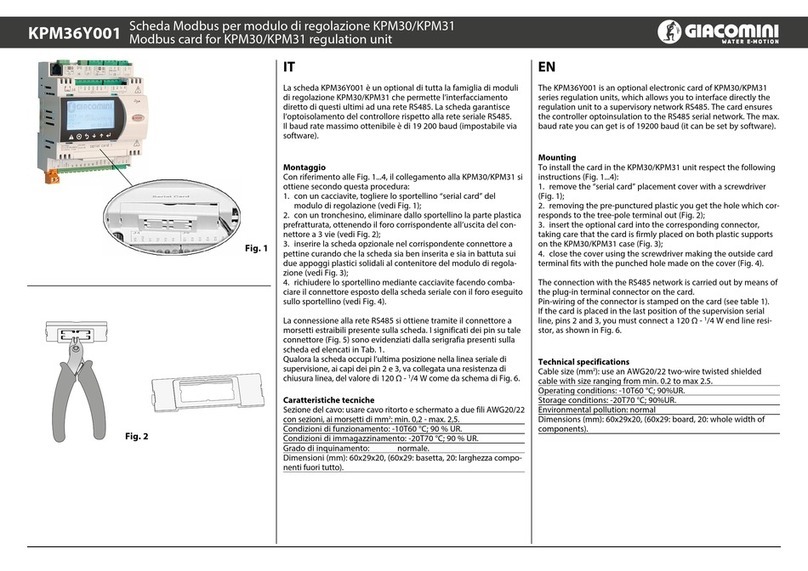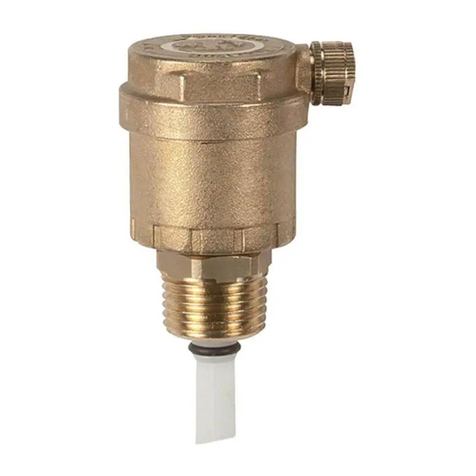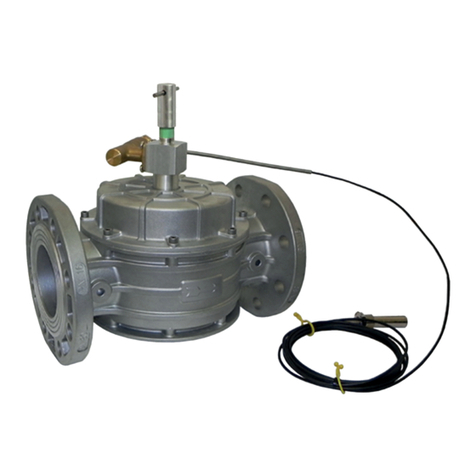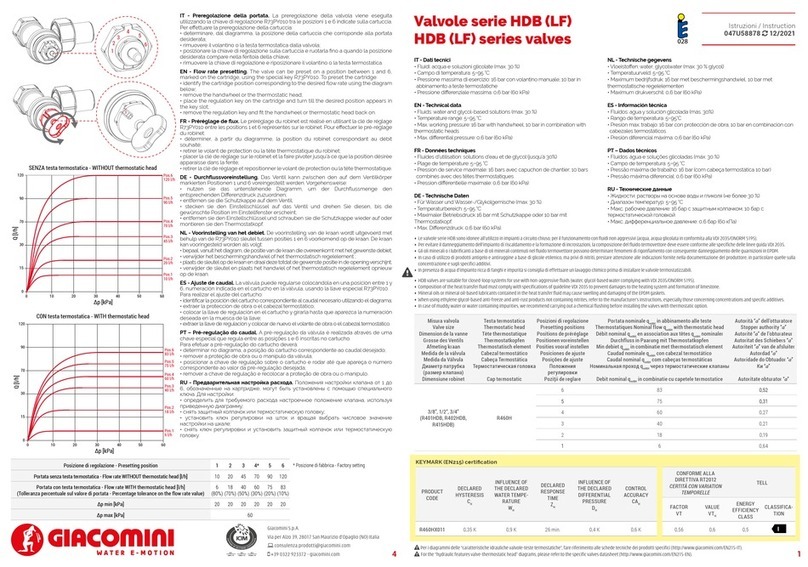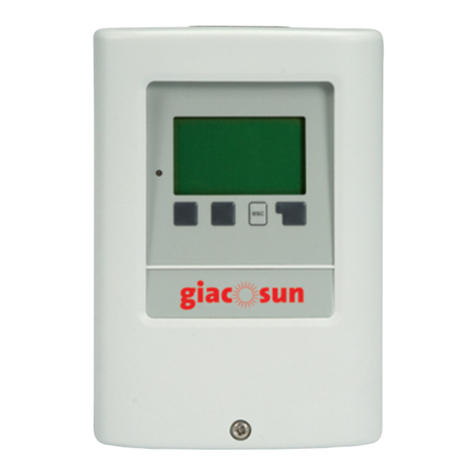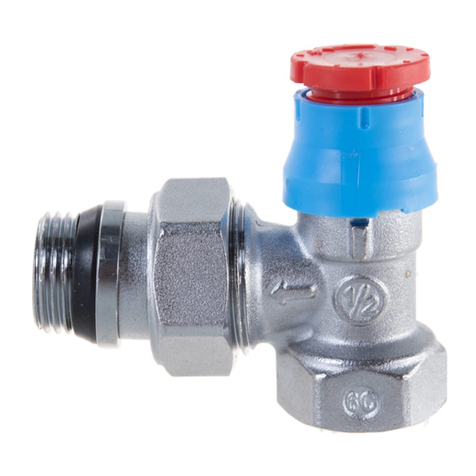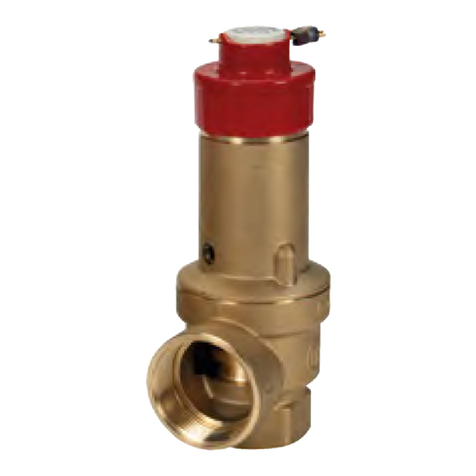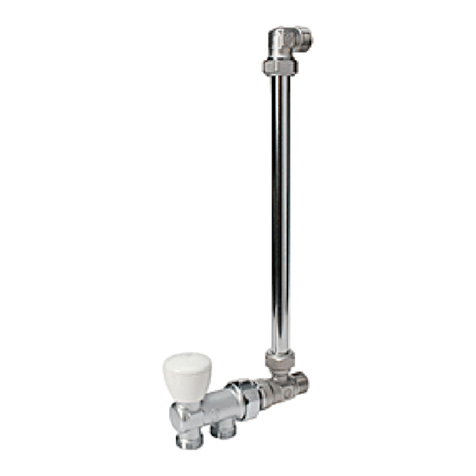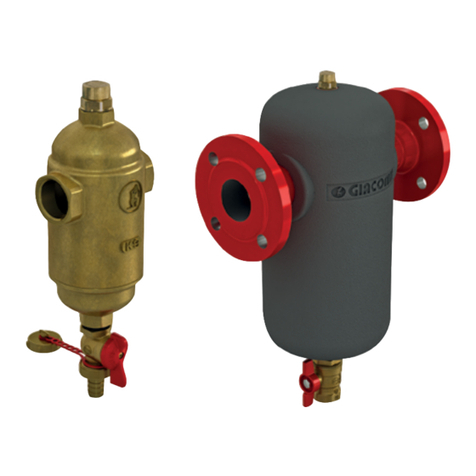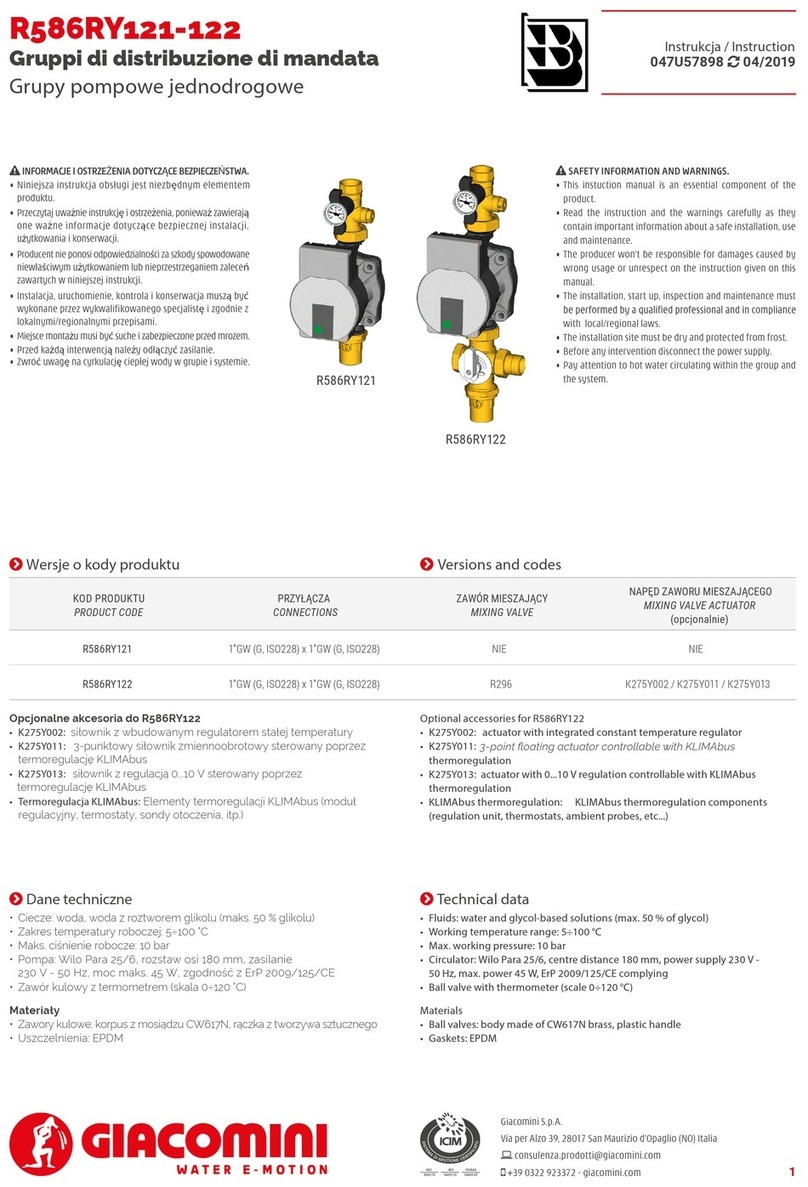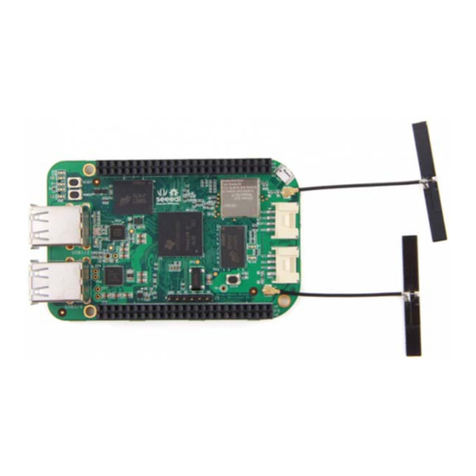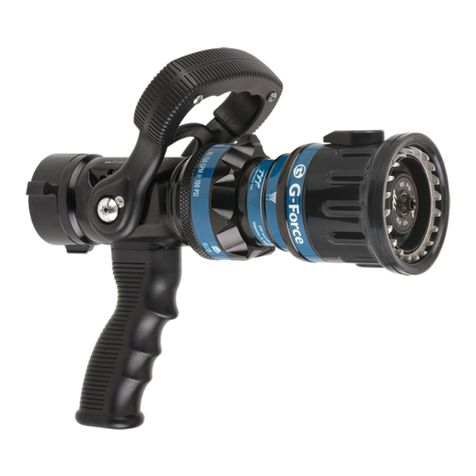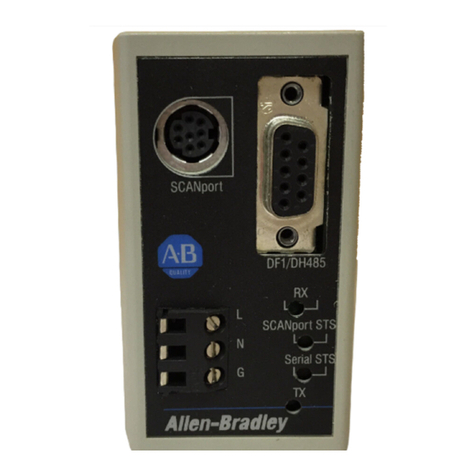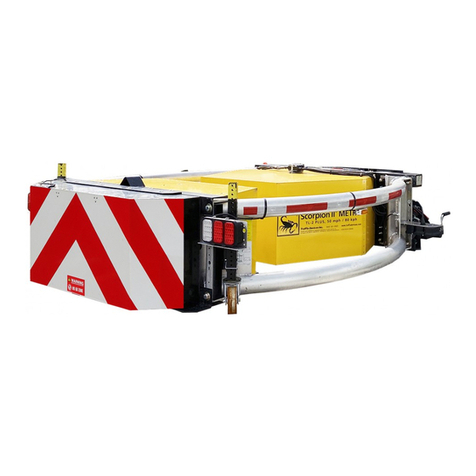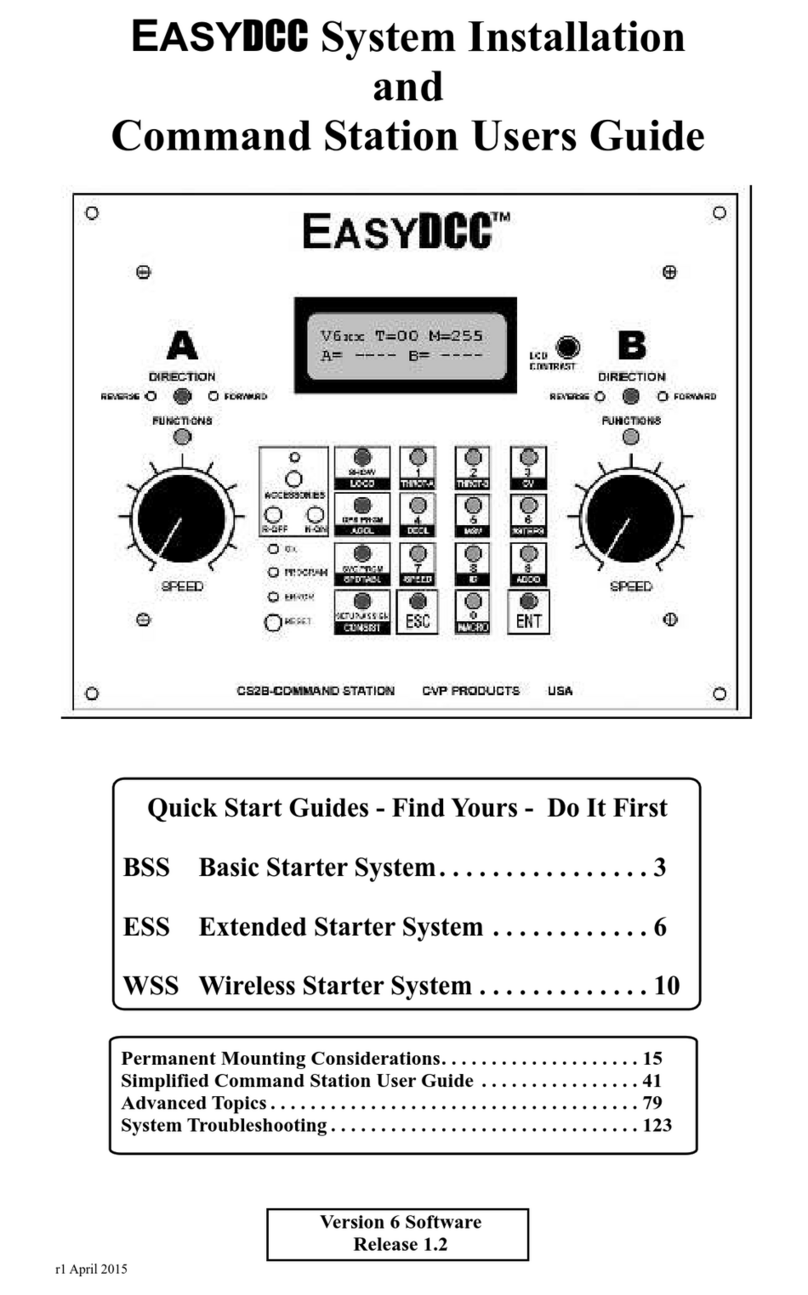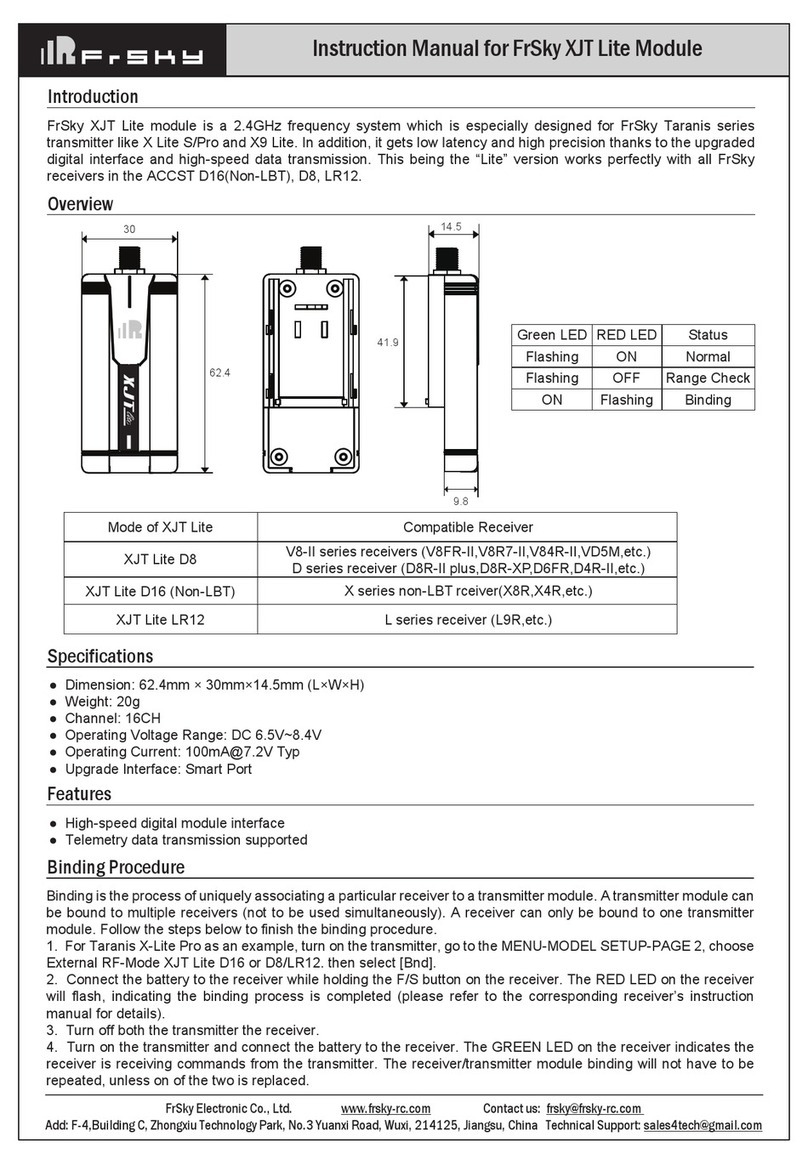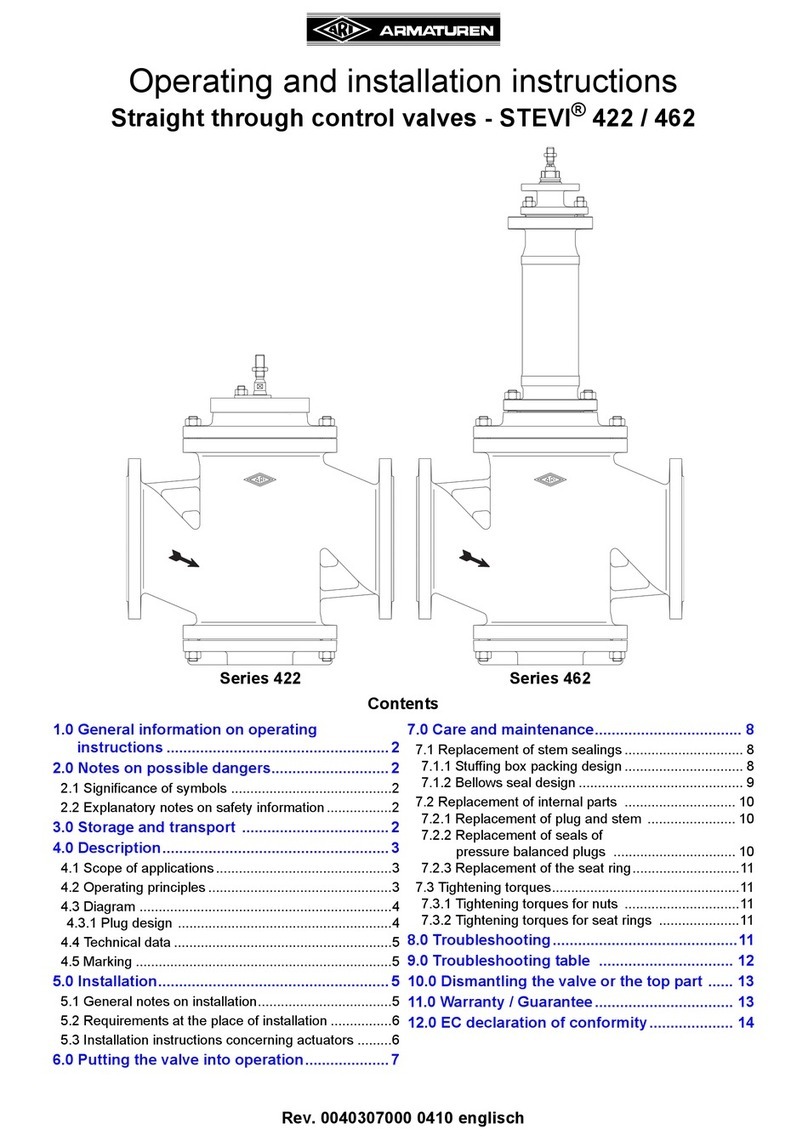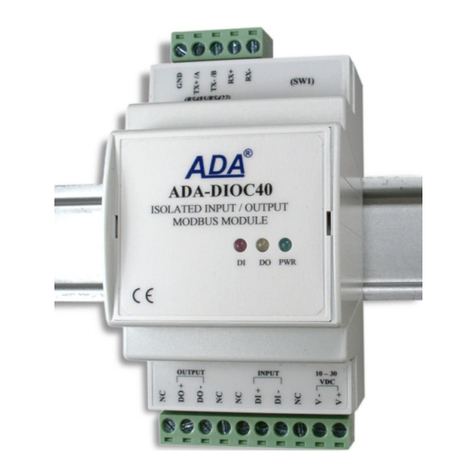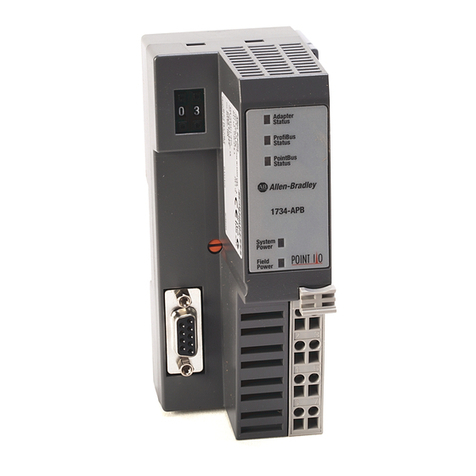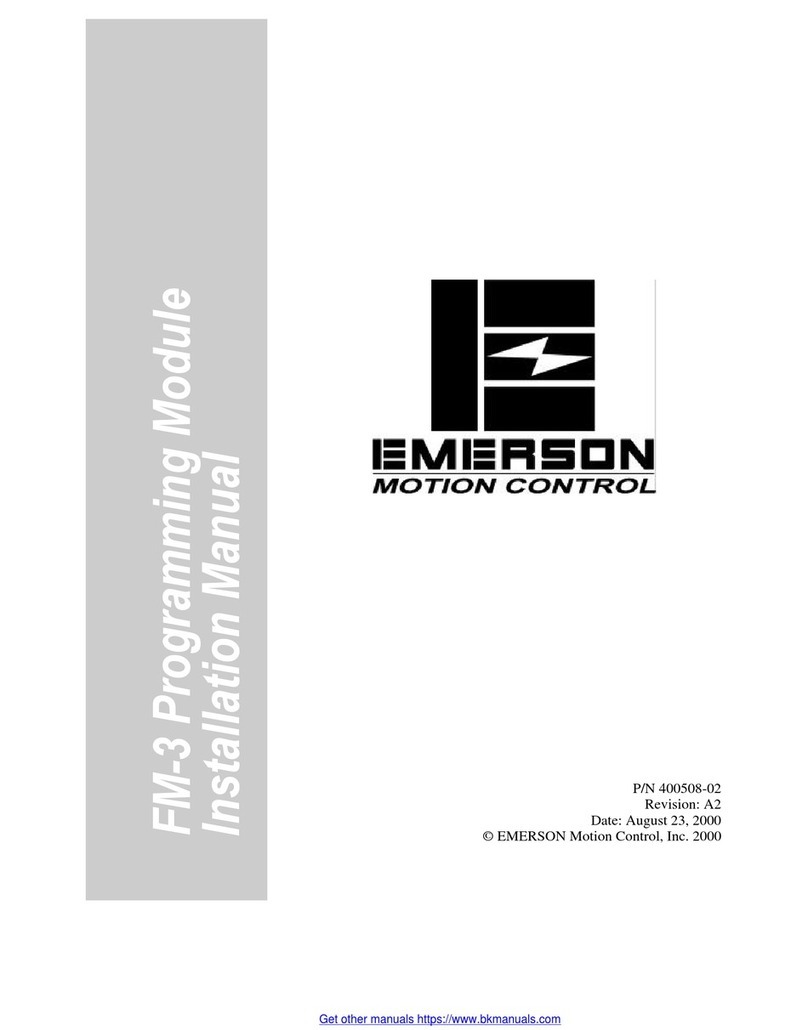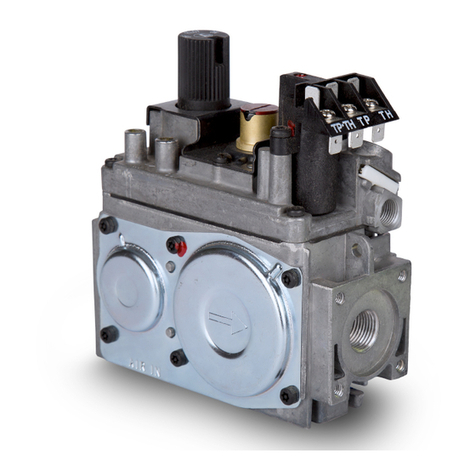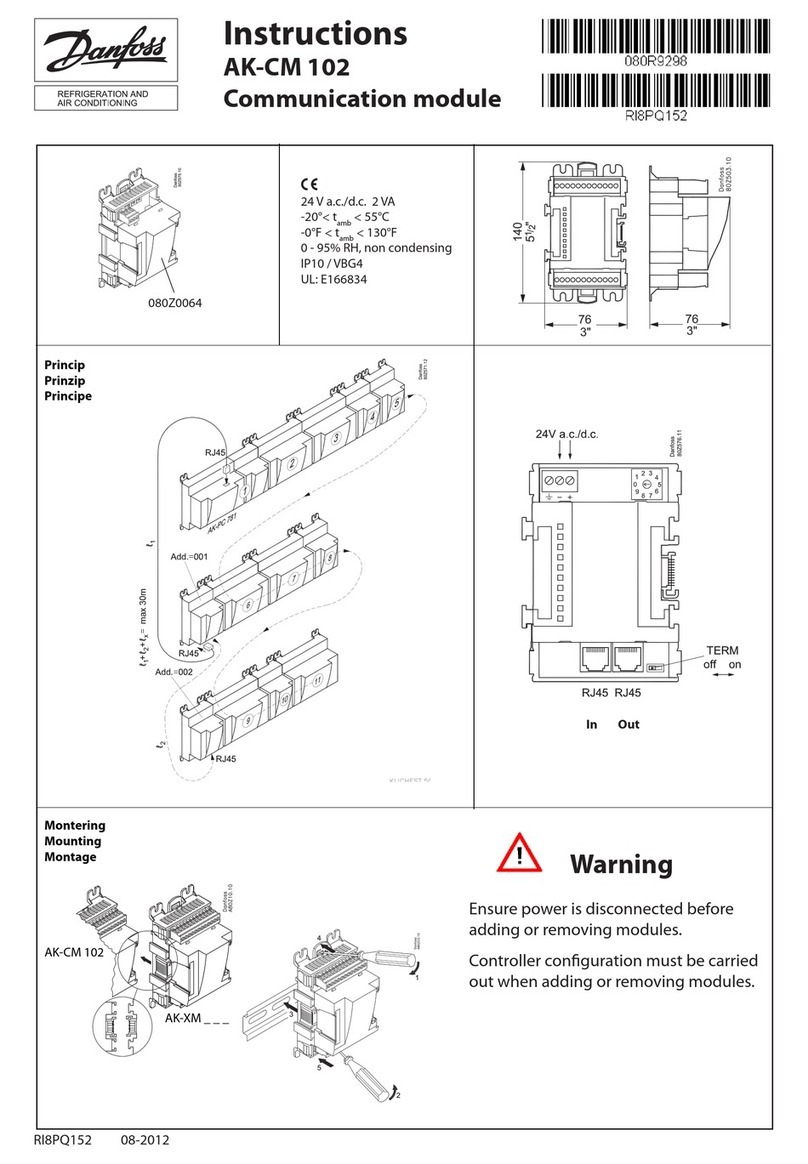
5
0798ML Dicembre 2015 - December 2015
Termoregolazione wireless
Modulo di controllo wireless PM100w
Wireless control unit PM100W
ISO
14001
0032A/3
OHSAS
18001
0064L/1
ISO
9001
0006/7
047U54518
Eliminazione dispositivi - Erasing devices
1. Premendo ripetutamente il tasto <or>, selezionare il canale richiesto (il
canale selezionato è indicato da luce LED lampeggiante rossa).
2. Premere il pulsante Reset. Tutti i dispositivi associati al canale prescelto
vengono cancellati e il LED si spegne.
1. By repeated pressing of the button < or > select the required channel (the
currently chosen channel is represented by a ashing red LED).
2. Press the Reset button. All devices enrolled to the chosen channel are erased and
the LED goes o.
Nota. Note.
• Nel caso di canali collegati, tutti i dispositivi di tutti i canali collegati
verranno cancellati.
• Eettuare il reset del modulo di controllo per tornare alle
impostazioni di fabbrica seguendo la procedura descritta sopra, fare
riferimento ai punti 1 e 2. Il pulsante Reset deve però essere tenuto
premuto per circa 12 secondi. Tutti i dispositivi saranno poi cancellati
e il modulo di controllo tornerà alle impostazioni di fabbrica.
• In the case of linked channels, all the devices of all linked channels will
be erased.
• Perform a main unit reset to factory default settings according to the
procedure above, see points 1 and 2. The only exception is that the reset
button is pressed and held for approximately 12s. Then all devices are
erased and the main unit has factory default settings.
Uso e manutenzione - Use and maintenance
Il sistema non richiede alcuna particolare manutenzione in fase di
funzionamento. Prima che inizi il periodo invernale di riscaldamento, si
consiglia di sostituire le pile degli apparecchi wireless (la vita utile per i
termostati è di 1 anno). Quando un dispositivo ha le pile scariche, il modulo lo
indicherà tramite il LED corrispondente. Il dispositivo continuerà a funzionare,
ma si consiglia di provvedere alla sostituzione delle pile entro 14 giorni.
Se le uscite da 1-16 non sono state attive per 7 giorni, si accenderanno una
dopo l’altra per 15 minuti per evitare che le teste termoelettriche si blocchino.
I terminali di uscita del relè del circolatore si accendono ogni 7 giorni per 10
minuti.
Ogni dispositivo (termostati, sensori) invia segnali periodici. Se il PM100WY02
non li ricevesse, noticherà la mancata comunicazione (con una luce LED
verde lampeggiante su un canale specico). Se tutti i dispositivi associati al
canale specico fossero persi, il canale verrà attivato ogni ora per 15 minuti.
In caso di problemi mancata comunicazione, controllare per prima cosa le
condizioni circostanti ed evitare che ci siano interferenze con altri dispositivi
radio. Questi potrebbero causare la mancata comunicazione tra più dispositivi.
Spostare il dispositivo in un punto più appropriato se fosse l’unico ad aver
interrotto la comunicazione.
The system doesn´t require any special maintenance in operational mode. Before
the heating time starts, we recommend you to replace the batteries in the wireless
devices (the declared lifetime for thermostats is 1 year.). When any device reports
a Low batt condition, then the unit indicates this by a relevant LED. The device still
works, but it is strictly recommended to replace the battery in 14 days.
If the outputs from 1-16 have not been active for 7 days, then they are switched on
one after the other for 15 min because of protection against the clogging of the
thermo-electric valves. The circulation pump relay output terminals switch each
7 days for 10 minutes.
Each device (thermostats, detectors) sends periodical transmissions. If the
PM100WY002 doesn´t receive them, then it starts to indicate communication
lost (by a ashing green LED on a specic channel). If all the devices enrolled
to the specic channel are lost then this channel is switched on every one hour
for 15 minutes. In the case of troubles with lost communication rst check the
environment and avoid the negative inuence of any other radio device. This
causes a communication loss with more than one device at the same time. Move
the device to a better place if only this particular device’s communcation is lost.
Associazione sensori ad un solo canale
Enrolling detectors to one channel
1. Premendo ripetutamente il pulsante <or> selezionare il canale richiesto (il
canale selezionato è indicato da un LED rosso lampeggiante)
2. Inserire una pila nel sensore wireless– il sensore verrà associato al canale
selezionato. Su PM100WY02 è segnalato da una luce LED verde ssa per un
canale specico. Il sensore non conferma in alcun modo l’associazione.
3. Associare tutti i sensori secondo quanto indicato.
1. By repeated pressing of the button <or> select the required channel (the
currently chosen channel is represented by a ashing red LED).
2. Insert a battery into the wireless detector – the detector will be enrolled to the
chosen channel. On the PM100WY002 it is signalled by the permanently lit green
LED of a specic channel. The detector doesn´t conrm enrolling at all.
3. Enroll all detectors according to the requirements.
Nota. Note.
• Una volta inserite le pile, estrarle e premere il contatto
antimanomissione ripetutamente (il resto della carica verrà scaricata).
Poi seguire le istruzioni del punto 2.
• Il canale può essere associato a più sensori magnetici.
• Quando vi sono più sensori magnetici associati ad un solo canale, il
canale viene bloccato (spento) no a quando tutti i sensori magnetici
non sono in standby (chiusi – AND logic)
• When batteries have already been inserted, take them out and press the
tamper contact a few times (the rest of the energy will be discharged).
Then follow point 2.
• More than one magnetic detector can be enrolled to the one channel.
• When several magnetic detectors are enrolled to one channel, then this
channel is blocked (turned o) until all of the magnetic detectors are not
in standby (closed – AND logic).
Procedura di associazione di termostati/sensori a più canali
Procedure for thermostat/detector enrolling to several channels
La procedura è simile a quella di associazione dei dispositivi ad un solo canale,
ma lo stesso termostato/sensore viene associato a diversi canali di uscita, uno
per uno. Questo consente a tutti i canali interessati di essere collegati l’uno
all’altro (accesi/spenti contemporaneamente = si comportano come un
canale unico).
Funzione: il “collegamento” è spesso usato per sistemi di riscaldamento a
pavimento in cui l’ampia supercie richiede una distribuzione dell’acqua
in più circuiti. Ecco perché un solo termostato può controllare più circuiti
contemporaneamente.
It is a very similar procedure to enrolling devices to one channel. The only exception
is that the same thermostat / detector is enrolled to several output channels one by
one. Thanks to this all the involved channels are linked to each other (switched on/
o at the same time = they behave as one channel).
Function: “The linking” is often used for under-oor heating where the large oor
surface needs the water splitting into a few other circuits. That´s how only one
thermostat can control several circuits at the same time.
Nota. Note.
• Un termostato deve essere sempre associato prima ad un canale e
poi agli altri canali di uscita.
• Un termostato può essere associato solo a canali che sono collegati
l’uno all’altro.
• A thermostat / detector always has to be enrolled to a channel rst and
then some output channels can be linked.
• A thermostat / detector can only be enrolled to channels which are
linked to each other.






